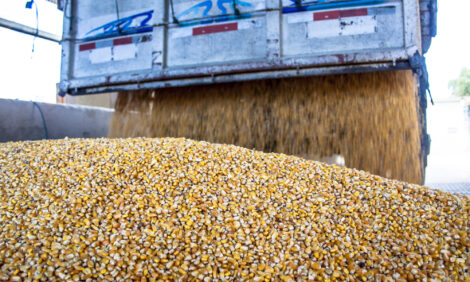



Market Preview: Top of Mind Trade Issues
US - Weekly US Market Preview provided by Steve R. Meyer, Ph.D., Paragon Economics, Inc.It appears that Mexico will not prohibit imports of beef, pork and poultry in combo bins. Some intense discussions between US and Mexican producers, processors and government officials has apparently smoothed the rift and assured Mexican officials of the consistency and safety of product in combo bins.
One big reason for Mexico’s opposition was allegations that product from different species were mixed together in some bins. I suppose that could happen in some processing plants, but the almost complete segregation of species in US slaughter plants makes such mixing virtually impossible. Whatever the reasons or talking points, this is a welcome resolution to what could have been a very serious problem.
COOL’s Final Rule
Speaking of mandatory country-of-origin labeling, USDA’s Agricultural Marketing Service released on Monday and published in the Federal Register on Thursday its Final Rule for Mandatory Country-of-origin labeling. Copies of the final rule and additional information are on display on line at www.ams.usda.gov/COOL.
The final rule summarizes the comments that USDA received in response to the Interim Final Rule published last summer and includes some changes to how USDA will administer the system.
The final rule includes some major changes that provide packers, processors and retailers a great deal of flexibility for labeling product from imported animals. The final rule becomes effective on 16 March. Here are the rules in as small of a nutshell as I can devise:
“Product of the US” (i.e. Label A) is still reserved only for product from animals born, raised and slaughtered in the United States. The label is not “required” on that product, though. No change there.
- “Product of the US and Canada” (i.e. Label B) can be used for:
- Product from pigs born in Canada and then raised and slaughtered in the United States (i.e. imported Canadian weaner or feeder pigs);
- Product from pigs born, raised and slaughtered in the United States, if they are processed during the same shift or day as pigs born in Canada and raised in the United States;
- Product from pigs born and raised in Canada (i.e. pigs imported for immediate slaughter) if they are processed during the same shift or day as pigs born in Canada and raised in the United States.
- “Product of Canada and the US” (i.e. Label C) can be used for:
- Product from pigs born and raised in Canada and slaughtered in the United States (i.e. pigs imported for immediate slaughter);
- Product from pigs born, raised and slaughtered in the United States, if they are processed during the same shift or day in which pigs born and raised in Canada are processed;
- Product from any pigs described in 1, 2 or 3 above since the countries on the label may be placed in any order for pigs in those categories.
Sound flexible? You bet. Sound confusing? Certainly. Sound like a red flag to some congressmen and senators? Very likely. And some have already said they are not happy with the degree of flexibility offered here. Their words were more along the lines of “not happy with the ability to taint US product with foreign country labels.” Politicians are good at hyperbole.
These rules indeed provide a great deal of flexibility and they really provide relief for Canadians selling market hogs to the United States and the US packers who buy them. That category of animals was required to carry the “Product of Canada and the US” label in the interim final rule and, perhaps more important, was the only group that could carry that label. The “forced uniqueness” would have, in my opinion, driven market hog imports to virtually zero. And it still might – at least until these rules take effect in March.
Readers know that I have always opposed mandatory COOL because of its proponents’ food safety and consumer right-to-know arguments when the real reason for COOL, in my opinion, was always to block imports of Canadian and Mexican livestock and meat from those countries plus some. So, any reduction of the onerousness (probably not a word but you know what I mean) of the law is good in my book.
The risk, though, is that legislators will view the rules as an end run on their intent and will either force USDA to tighten the rules or reopen the law and rewrite it in a manner that ties USDA’s hands. The first is a definite possibility with a new administration, Secretary of Agriculture and so far unknown deputy- and under-secretaries. The second is a definite possibility because House Agriculture Committee Chairman Colin Peterson and Senate Ag Committee Chairman Tom Harkin both cried foul last summer when packers’ plans to use the flexibility provided by the interim final rule exceeded what Peterson and Harkin said was Congress’ intent.
Sorting Out the Stats
Finally, a short explanation regarding the data in this week’s North American Pork Industry Data table (below). The most recent data that you see is for the week that ended 27 December, one week older than normal for this table. In addition, data for sow slaughter for that week has not been posted to the Statistics Canada website. Stats Canada is changing its web-based reports and is encountering some difficulties in that process. I think we all know how that goes, especially in a year like 2008 in which one has to put 53 weeks’ worth of data. It’s one of those calendar quirks that, perhaps, only market analysts understand. But believe me, it wreaks havoc with spreadsheets and data systems.
In addition, the year-to-date comparisons to last year are greatly skewed because last year’s data represented almost a full two weeks while this year’s data represents only six weekdays. The year-over-year change figures will become more representative as we add more data and thus reduce the impact of this difference in the number of days. Another lesson to be careful about when considering those percentage change numbers.









